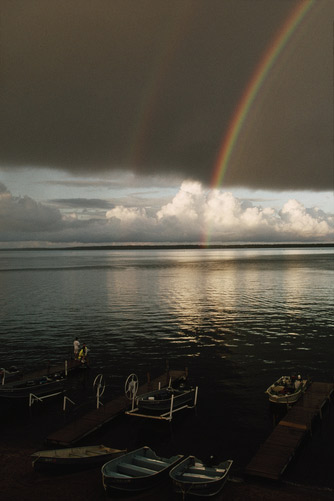People move to Southern California for the weather. They may try to tell you otherwise (how many time have we heard that “I’m doing it for my career” line), but I’m pretty sure they’re doing it for the blue skies and endless sunshine.
That’s why I moved from San Francisco to Los Angeles. I couldn’t deal with the consistent change in weather, the weeks of grey rain, clouds hanging low in the summer sky. I wanted a given, and that given needed to be SUN, SUN, SUN.
So, you can imagine how traumatizing it was for me (and the rest of the So-Cal population) to spend half of December watching as rain deluged Los Angeles. Nearly 13 inches of rain fell during this storm, making it the wettest December since 1889.
LA usually gets about 15 inches of rain total throughout the year, so this torrential downpour caused extreme havoc in the city of angels. Between flooding and mudslides, damages have been estimated to top $60 million dollars. The storm has even affected the soon-to-be harvested avocado crop, the frost and heavy rain damaging many of the trees. Although it’s to early to say for sure, many farmers are predicting a smaller crop, and higher avocado prices.
If you’re anything like me, your immediate thoughts about this crazy weather are: armageddon, global warming and the story of Noah’s arc. However, a little research reveals otherwise. Currently, Southern California is experiencing the famous “El Nina” effect, which means that the waters are cooler than normal in the Pacific ocean, which should result in drier winters for Southern California and extremely rainy weather in the Pacific Northwest.
Last month’s storms, an obvious deviation from El Nina, were sent to us courtesy of the Gulf of Alaska and a strong northern weather system referred to as Arctic oscillation. Although this north-south weather phenomenon is quite unusual, its not anomalous. In 2004, one of Southern California’s rainiest years, most storms were a direct result of Arctic oscillation.
It’s not all bad news. Sure there’s millions of dollars worth of damage, we’re living in Seattle style weather, future guacamole will probably cost as much as caviar and most of us have suffered at least two weeks worth of a Vitamin-D deficiency, but there is some good to come out of this. The month of December refueled Southern California’s dwindling water supply. After a three year drought the heavy storms refilled water levels that had been at an all time low. The cold snap has also been embraced by many So-Cal vineyard owners, who say that the frost will help grapes enter their winter dormancy state. Not to mention the fact that the last couple of years saw wildfires plaguing much of Southern California, due to extremely high temperatures, and little moisture. So it could be argued that thanks to these storms we’ll stay hydrated, drunk and avoid being burned to a crisp.


